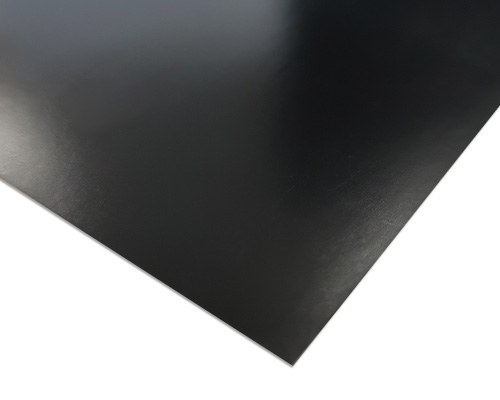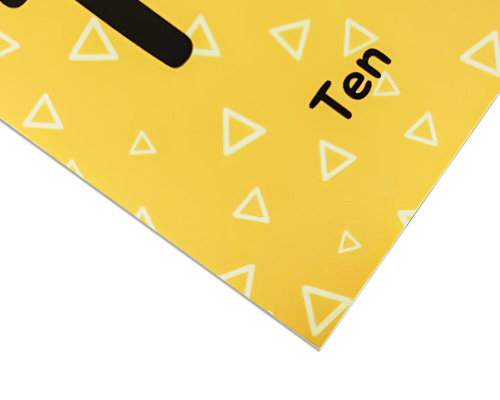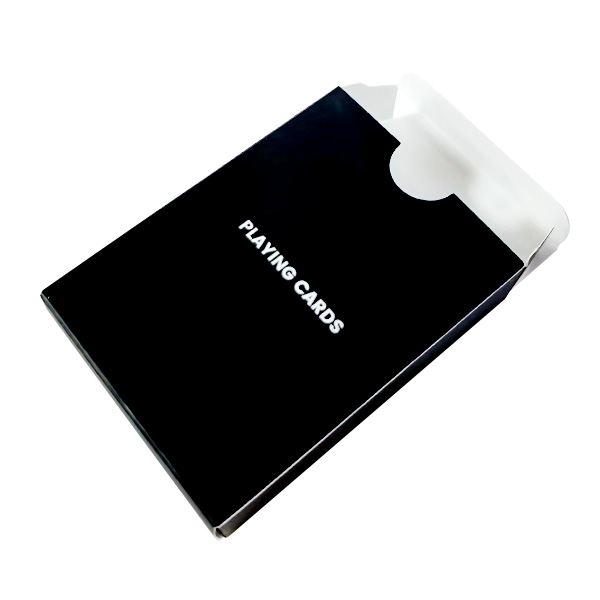How to design and print a custom trading card game to sell

As a trading card game printer, we’ve have seen several fascinating iterations of the trading card game concept — some more successful and others less so. If you’re inspired by the idea of creating your own custom game cards, let us help you. On one level, inventing a game is straightforward, but on others it can be complex and challenging. After 25 years and more of supporting clients to create and refine their game design skills, we’re confident that we have finally found the perfect formula for bringing a trading card game to life with custom printed game cards. So, we’d like to share with you our seven simple steps for creating your own custom trading card game and getting it ready to print. Ready? Let’s get started!
Introduction to custom game cards
Custom game cards are a great way to bring your trading card game idea to life, to embody your concept in a beautiful design, and have the satisfaction of knowing that other people are buying your game and enjoying playing it. Customization means that the cards are designed specifically for your game — either by you or in collaboration with a professional designer following your ideas — and can feature unique artwork, game mechanics, and special abilities, scores, and so on. By creating your own custom game cards, you can take your game design to the next level and create a truly unique and exciting gameplay experience. With the right approach and a little bit of marketing knowhow, you have the potential to sell your game for profit, too.
Benefits of creating your own trading card game
If you’re a keen gamer it won’t be long before you start to get inspired to make your own game. You can come at these from several possible angles. For example:
- You might figure out that there’s something missing from one of the games you’ve played a lot, and that can give you an idea for a new game that would “fill the gap”.
- Often — especially if you play lots of different games — you’ll begin to see how you could combine all your favorite elements from several games into one mega game that combines the “best of all worlds”.
- Occasionally, you may simply be struck by inspiration out of the blue and find yourself in possession of a truly original and captivating idea for a trading card game that no-one has ever thought of before!
Game ideas can start from a solution you think of to a problematic mechanic, a theme or topic which you love, or a new concept you dreamed up in the shower one morning! However you come up with the original idea, there are many benefits to creating your own trading card game. First and foremost, you have complete creative control over the game design, artwork, and game mechanics. The only limit is your imagination! This means you can create a game that is truly unique and tailored to your specific interests and preferences. And creating your own trading card game can be a fun and rewarding hobby — something you share with your family, friends, or gaming club just for fun — or even a profitable business venture if you decide to sell your game.
Step 1: Planning your custom card game
The first step in creating your own custom trading card game is to plan out the game design. This includes deciding on the following core factors:
- Your game’s theme — Medieval? Fantasy? SF? Detective? Warfare? General knowledge? Robots and chickens?! It can be as crazy as you like, but the theme is important as it will inform everything else from the rules and objectives to the mechanics and the artwork.
- Mechanics — This is about the nuts and bolts of how your game works; how turns are taken, how long they last, the aims for each player, whether it’s competitive or social, how points are scored, and so on.
- The “win condition” — this is simply what a player or players must do in order to win. It seems obvious, but it’s often one of the trickiest factors to clearly and unequivocally define.
- Number and type of cards — how many cards will there be? How will they be grouped? What characteristics will they have? For example: character cards, terrain cards, power cards, instruction cards, item cards, etc.
- You should also consider how many players the game will support, how long a typical game will last, and any special abilities or rules that will be included in the game but not on the cards, in which case you’ll need a leaflet or rule book depending on the complexity of your game design.
One important thing to keep in mind when planning your game is to make it balanced and fair for all players. This means ensuring that each card has a unique but equal value and that no card or ability is overpowered.

Step 2: Developing the game mechanics
Once you have a solid game design in place, the next step is to develop the game mechanics. As we said before, this includes deciding on the rules for how the cards are played, how players can interact with each other, and how the game is won. You’ll need to think about:
- The order of play — is it unidirectional, multidirectional, or can it change during the course of play?
- How many actions can a player take in a single turn?
- Can players be eliminated from play or is everyone in with a chance right up to the end?
- Will you need other components such as dice and tokens or a timer?
- Can players swap cards and form alliances?
When developing the game mechanics, it’s important to playtest the game thoroughly to ensure that it is balanced and fun to play. You will almost certainly need to make adjustments to the game mechanics based on feedback from playtesters. While playtesting with your friends or family is a good first step, have courage to take your game to strangers. To make sure that the feedback you’re getting is the most useful, it must be impartial. So, see if you can persuade a game club you don’t normally attend to give it a trial run, for example, or mock up a digital version people can try out online.
Step 3: Designing the card layout and artwork
One of the most common mistakes we see is when people spend a lot of time, money, and creative effort making beautiful artwork before they’ve tested the other aspects of the game design. During the playtesting phase — as so much can and will change during the process — there’s no need for a beautifully painted image of a knight, say, or a monster. The card at that stage can literally be a cut up cereal packet with the word “knight” or “monster” written on it with a Sharpie!
But, with the game mechanics and rules in place and tested, it’s time to start designing the card layout and artwork. The card layout should be easy to read and understand, with all the necessary information clearly displayed on the front and back of the card. Try not to overcrowd a card. If you need more information than can be laid out logically and in an easy to read manner on a card face, you may want to go back and see if there’s a way to slim down your mechanics before going further.
The artwork on the cards should be eye-catching and high-quality, especially if you intend to sell the game. You can hire a professional artist to create the artwork for your game or create the artwork yourself if you have the skills. If you go the DIY route, you have two options. You can create the artwork with traditional materials — like paint, pens, and paper — and then scan it to digitize it; or you can create digital art in the first place using software like Adobe Illustrator or InDesign. Which route you choose, it’s important to ensure that the artwork is consistent throughout the game and fits with the game’s theme.
Step 4: Choosing the Right Printing Method for Your custom card game
Once the card layout and artwork are finalized, it’s time to choose the right printing method for your custom card game. There are several different printing methods to choose from, including digital printing and offset printing.
Digital printing is a good option for smaller print runs — say, if you need fewer than 200 decks and you don’t want a custom box for each deck — or for games that require very frequent updates or revisions as in most cases you’ll get a faster turnaround.
Offset printing is a more traditional printing method that is ideal for larger print runs — the more you print, the less it costs per unit — so if you’ll be selling your cards, offset is likely your best option. Offset also gives much better quality art reproduction, more vivid and richer colors, a wider range of paper, card, and finishing choices, and generally a more professional-looking result.
Step 5: Selecting the right card stock and finish
In addition to choosing the right printing method, it’s also important to select the right card stock and finish for your custom trading card game. There are many different types of card stock and finishes to choose from, each with its own unique properties and benefits.
Some popular options for card stock include coated card stock, while popular finishes include matte, glossy, and linen finishes, not to mention special treatments such as metallic sheen or even holographic card. The right card stock and finish will depend on your personal preferences and the overall feel of your game, but here are the most common options our clients choose:
- 300 gsm / 110 lb gloss art paper
- 300 gsm / 110 lb matte art paper
- 350 gsm / 129 lb gloss art paper
- 310 gsm / 114 lb black core paper
- two sheets of C1S (cover paper coated on one side) glued together
The corners of your cards may be square or rounded, as you prefer. We can also add finishes to your cards to make them extra special, including:
- spot UV treatment
- varnishing
- foil stamping
- metallic inking and holographic card
- UV printing (using special photo reactive inks and ultraviolet light)






Custom trading card sizes and thicknesses
We use die-cutting to make our cards. This involves making a cutting mold. We have the following size molds always in our stock:
- 5″ x 3.5″
- 5″ x 5.5″
- 72 mm x 100 mm
- 79 mm x 84 mm
- 100 mm x 140 mm
- 160 mm x 224 mm
Using our standard molds keeps costs down, but we can make cards of any thickness you need, although if we must make a new mold from scratch, that will incur a small added fee.
Step 6: Printing and packaging your custom trading card game
With all the design elements in place, it’s time to print and package your custom trading card game. the best idea here is to produce the cards and packaging for your game with us. Why? Because it’s important to work with a reputable printing company that specializes in card game printing and packaging to make sure that the final overall product is of the same high quality, and that the materials, structural design, and artwork for the box are in keeping with the cards. if you print with us, we can also produce a professional instructions booklet, and any other accessories that will be included with the game.
To prepare to ship your finished game cards, we’ll package them in the box of your choice — a booster pack, a cardboard box, a telescope rigid box, or a magnetic closure rigid box — before shrink-wrapping the package. We’ll load your cards into a board game box, or we can package them in a simple plastic wrapper.
Step 7: Marketing and selling your custom card game
The final step in bringing your trading card game to life with custom game cards — at least, if you have a commercial aim in mind — is to market and sell your game. You may want to develop a website or social media accounts focused on your game, attend gaming conventions and events, and reaching out to retailers and distributors to stock your game. Start with local stores, gaming clubs, and then broaden your outreach as you begin to see some success. Many independent game makers also use online e-commerce platforms such as a hosted Shopify store or through third-party sellers such as Amazon, eBay, and Etsy.
It’s important to have a solid marketing plan in place to ensure that your game reaches the right audience and generates the necessary buzz to be successful. You may also want to consider offering special promotions or discounts to early adopters of your game to help build momentum.
Creating your own trading card game can be a fun and rewarding experience. By following these 7 simple steps for creating your own custom game cards, you can take your game design to the next level and create a truly unique and exciting gameplay experience.
If you’re interested in creating your own custom trading card game, start planning today and bring your game to life with custom game cards.
Talk to us!
If you’re ready to design and print a deck of stunning, high-quality trading game cards — and first-class customer service is as important to you as an unparalleled product — then we should talk. Get in touch today to chat through your needs or to ask for a no-obligation quote. We can’t wait to help you make your trading game cards!















